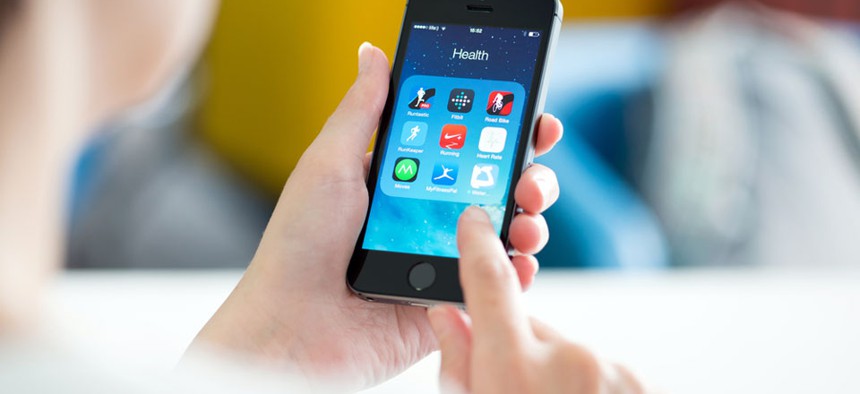Some Smartphone Apps Have to Be Cleared by the FDA

bloomua/Shutterstock.com
Apps with a medical purpose need some approval
So you have a great idea for an app. Not so fast: it took two years and over half a million dollars to get ours cleared for marketing by the US Food and Drug Administration (FDA).
Our app, DANA uses a mobile phone to records peoples’ reaction time during game-like tests. It also provides questionnaires that help clinicians evaluate brain health. Commissioned from AnthroTronix by the Department of Defense, the app will help diagnose concussion, depression and Post-Traumatic Stress Disorder (PTSD).
For something so important, a serious investment of time and money for clearance may not sound extravagant, but few small companies can afford a two-year go-to-market delay, not to mention the significant investment and heartache that goes with it. And although the FDA has tried to facilitate regulation by providing guides like the Mobile Medical Applications Guidance Document and the Mobile Medical Applications website, the regulatory process remains confusing.
Here are five simple lessons from our own experience that will help other entrepreneurs to do the right thing and engage with the FDA:
Innovators are afraid of the FDA
I’ve heard of countless entrepreneurs trying to avoid the FDA. At AnthroTronix, we’ve done it too; after designing a product for children with disabilities, we labeled it “educational technology” or “assistive technology,” to avoid connoting medical diagnosis. This, in part, is why the product failed; we were designing for our convenience, not for impact.
With its game-like interface, DANA could be used and classified as entertainment, although it also falls within the definition of a diagnostic medical device. This time, instead of joining the thousands of direct-to-consumer apps for entertainment or self-monitoring, we recognized the impact that it could have in the hands of clinicians providing care for deployed troops, and decided to take on the FDA.
There isn’t a clear path for innovative products
Your app may be a medical device, but that doesn’t always mean that you have to submit paperwork to the FDA. If the patient risk is low enough, the FDA may exercise enforcement discretion with these devices, meaning that it will not enforce requirements under the Federal Food, Drug, and Cosmetic Act.
The best way to figure out how to classify your device is to find a “predicate”: something similar that is already on the market. With a predicate, you can file a 510(k) application rather than submit to the onerous Premarket Approval process. If there is no predicate listed with the FDA—a very typical scenario for mobile app developers—you will very likely have to have a conversation with the current contact listed on the Mobile Medical Applications website.
But FDA regulators aren’t always right
The key to dialogue with the FDA is persistence and a strong position.
We wrote to the FDA asking for information on how to classify DANA. Eleven months later, we received a letter from the FDA suggesting that we file for premarket approval and classify the phone app right alongside heart valves as a Class III Device: the highest risk classification.
But while we were waiting for a response, we were also developing our case. So we were able to quickly tell the FDA why they were wrong, beginning a very productive dialogue. Within a month, everyone had agreed on a Class II designation, which includes less vital devices, like powered wheelchairs, and allows us to file a 510(k) application.
The paperwork never gets easier
Once we decided to submit a 510(k) application, we faced a daunting task: the quality processes we’d been using for 15 years were not formatted correctly for the FDA. We tried to remedy this, but it’s like writing another language; a full 79 pages of the FDA document “Refuse to Accept Policy for 510(k)s” are devoted to determining whether or not a 510(k) submission meets administrative acceptability. (Despite these pitfalls, we successfully submitted our 510(k) application and received clearance in exactly the promised 90 days.)
In the end, you won’t get approval and that’s fine
A common misconception is that the FDA must approve everything. In fact, the vast majority of devices are “cleared,” not approved. Only the riskiest devices or those that are life-supporting must receive FDA approval.
Most devices are cleared based on previously cleared devices. Once we found a desktop application that had already been cleared by the FDA, we were able to convince FDA regulators that the risks posed by our mobile application were substantially equivalent.
Now that the FDA has cleared DANA, it paves the way for its intended use by the military to support our troops in-theatre; a Jan., 2015 Army Times article touted the app as a “brain thermometer” that could “help diagnose and measure a soldier’s injuries.”
Our clearance also paves the way for the use of DANA in clinics and at home, from measuring the effectiveness of a treatment for depression to early detection of Alzheimer’s disease.
Of course, we are still subject to a whole new host of device regulatory requirements that cover everything from the marketing material to the distribution, installation, and operation of the mobile medical app. But that’s just part of the job.
(Image via Bloomua / Shutterstock.com)


